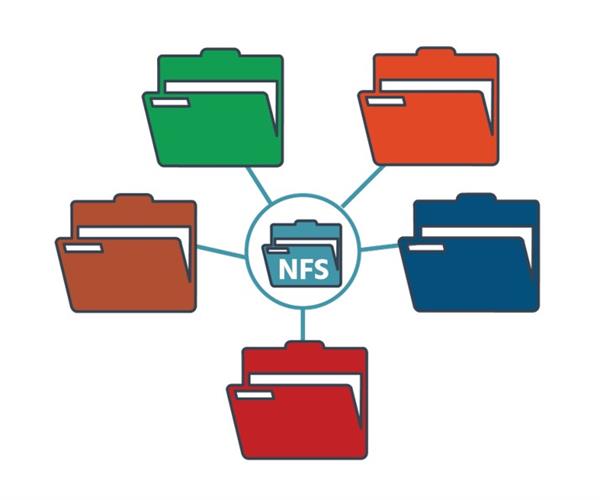Network File System (NFS)

The Network File System (NFS) is an IP-based file-sharing protocol that is used by NAS systems to allow multiple remote systems to connect to a shared file system. NFS uses file-level data access and the target (or destination) NAS device controls the storage device.
It is a “distributed” file system protocol, which means that its data is stored on a server and that it uses a network protocol to share – and restrict – access to the file system, using the same coding that is used for local files. NFS has three components: a client, a server, and the protocol that enables the two to communicate. It allows a user on Computer 1 (the “client”) to access File A on Computer 2 over a network in much the same way they would access a file on Computer 1’s own hard drive. To Computer 1, NFS is ‘invisible’; while NFS is keeping track of where files are located and transporting data, Computer 1 ‘sees’ a file system that looks local. The naming convention used by NFS makes it impossible to tell from File A’s name that it’s being accessed remotely. And if File A is being modified on Computer 2, those modifications will be seen on Computer 1. Similarly, if the file is moved to a different server, the user of Computer 1 won’t know it.
While NFS is OS- (operating system) independent, it is typically used on Unix systems, macOS, and Linux. It is also hardware-, network architectures, and transport protocol independent, and works well in both small and large environments.
Distributed file systems such as NFS offer many benefits. Storing data on servers frees up the resources of client machines. Distributing data (e.g., important administrative data) to multiple clients is easier, and it is even possible to transfer files between computers that use different operating systems (i.e., between computers in “heterogeneous environments”). For example, you could use a Windows NFS file server in a Linux environment to give Linux client computers access to files on that Windows NFS server. And rather than every user in an organization having their home directory on their individual network machine, all the home directories could be set up on an NFS server and then accessed as appropriate by everyone on the network.
NFS is the only NAS protocol supported by VMware’s vSphere, which supports NFS version 3 over TCP/IP. (Note that you cannot initialize or format a NAS target from a remote server.) VMware vSphere virtualizes and aggregates (i.e., gathers) the underlying physical hardware resources across multiple systems and provides pools of virtual resources to the data center. It’s made up of infrastructure services for compute, storage, and networking (namely, vCompute, vStorage, and vnetwork), application services (including VMware HA discussed in the last section), and a single point of control for the data center (VMware vCenter Server) which provides essential data center services such as access control, performance monitoring, and configuration. Users can access the VMware vSphere data center through the vSphere Client. The home screen of the vSphere Client is a system dashboard that aggregates data from different sources in the environment together in a single, unified view.





